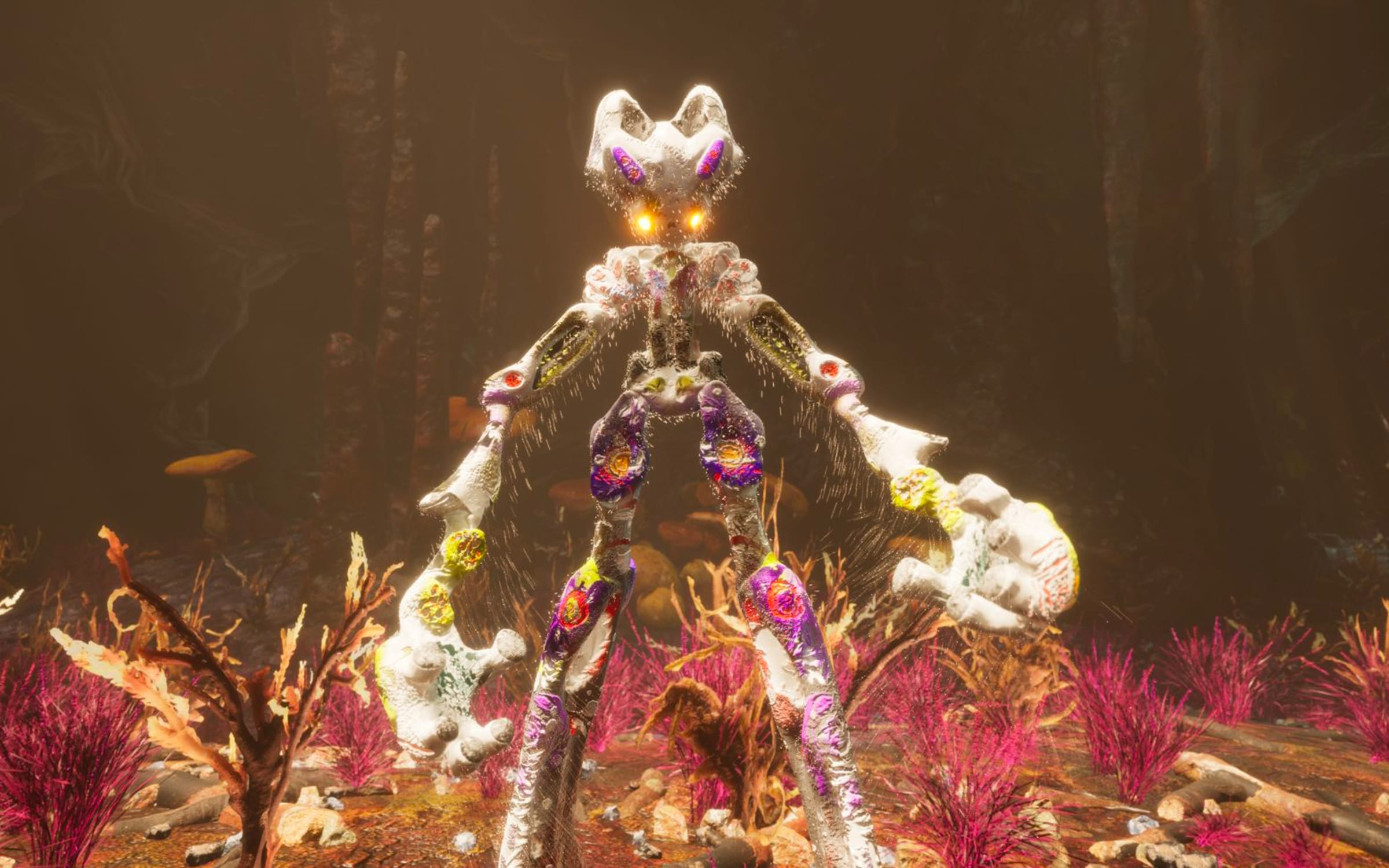In 2021, 2.8 billion people – almost a third of the world’s population – played video games, making it one of the biggest mass phenomena of our time. Many people spend hours every day in parallel worlds and live a multitude of different lives. Video games are to the 21st century what movies were to the 20th century and novels to the 19th century.

The aesthetics of games first became part of artistic practices decades ago, when artists began integrating the visual language of video games into their works. Artists have appropriated, modified, and subverted existing video games in order to reflect on them and to approach questions of our existence within virtual worlds as well as the sociopolitical issues involved in the rendering of new realities. Some artists present a critique of games by exposing their often-discriminatory elements and stereotypical depictions. More recently, artists have also started playing existing mainstream games, opening up their practices to massive new audiences and finding new forms of engagement. Today, video games are at the frontier of art for me – and this is why I curated ‘Worldbuilding’, an exhibition about gaming and art in the digital age, at the Julia Stoschek Foundation in Dusseldorf and the Centre Pompidou-Metz in France.
One fascinating artist who is part of ‘Worldbuilding’ and is currently working with games is Brazilian artist Gabriel Massan. While video games were traditionally created by a small and insular group of people with backgrounds in engineering and with very limited perspective, this is now changing rapidly. Many more people have access to the tools for making games, and artists like Massan are increasingly developing the technical ability to invent, design, and distribute their own games worldwide; to create virtual worlds of diversity and inclusion. As Anna Anthropy writes in her book Rise of the Videogame Zinesters (2012), ‘What I want from video games is a plurality of voices. I want games to come from a wider set of experiences and present a wider range of perspectives. I can imagine […] a world in which digital games are not manufactured for the same small audience but one in which games are authored by you and me for the benefit of our peers.’
With this in mind, the Arts Technology team at the Serpentine has curated ‘Third World: The Bottom Dimension’, an exhibition, a game, and participatory digital tokens powered by Tezos conceptualized by Massan in collaboration with interdisciplinary artists Castiel Vitorino Brasileiro and Novíssimo Edgar, and the vocalist and music producer LYZZA. The exhibition extends the ideas that have driven the creation and development of the mirroring video game. It offers audiences an opportunity to play the game in real time in a communal setting surrounded by site-specific set designs, sculptures, and sounds – a unique experience that the exhibition of games creates. As Massan says, ‘I want to create a work that people can walk inside, [to create] the experience of walking through possibilities and memories of life and narrative.’

Third World: The Bottom Dimension emerges from Massan’s interest in technological, social, and economic decentralization and includes participatory digital tokens powered by Tezos. Players can record ‘memories’ of their own actions as they play the game, and by minting this record on the blockchain, build a public archive of multiple perspectives and actions. And through the lenses of decoloniality, queerness, and decentralization, the work challenges us to rethink the ways in which we understand and orient ourselves in the world, with central themes including ancestral knowledge, healing, ecological awareness, transmutation, and agency.
When designing this project, Massan said: ‘I asked myself how can I reveal, rather than replicate, this system of inequality for people who are not living this reality, so that they can really understand how it can suffocate – how it can change one’s behavior, intentions, and how one navigates and understands their own body – and so that they can also understand that others also need the same levels of energy and care.’
Third World: The Bottom Dimension, the game, will be free to play online from June 23, 2023. ‘Third World: The Bottom Dimension’, the exhibition, will be on view from June 23 to October 22, 2023, at the Serpentine North, London.
‘Worldbuilding: Gaming and Art in the Digital Age’ is on view at the Julia Stoschek Foundation in Dusseldorf through December 10, 2023, and at the Centre Pompidou-Metz through January 15, 2024.
Hans Ulrich Obrist is the Artistic Director of the Serpentine in London, Senior Advisor at LUMA Arles, and Senior Artistic Advisor at The Shed in New York.
Published on June 20, 2023.
Caption for full-bleed images: Stills from Gabriel Massan’s Third World: The Bottom Dimension, 2022 (video game). Featuring Castiel Vitorino Brasileiro, Novíssimo Edgar, and LYZZA. Courtesy of Gabriel Massan. A dark filter was applied over the first image for readability.